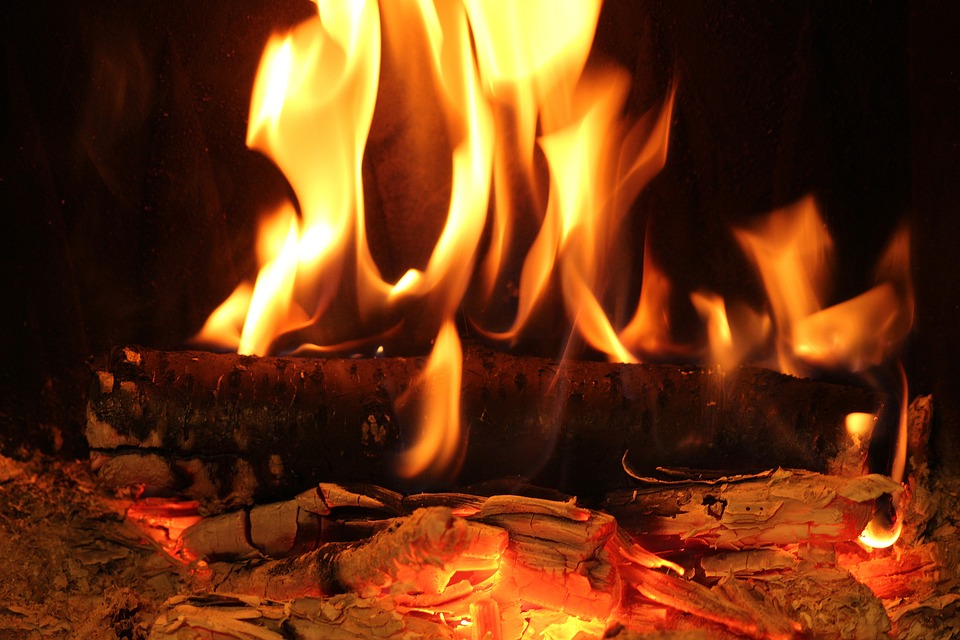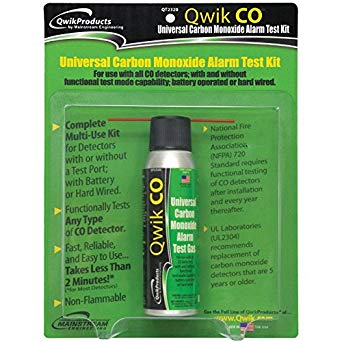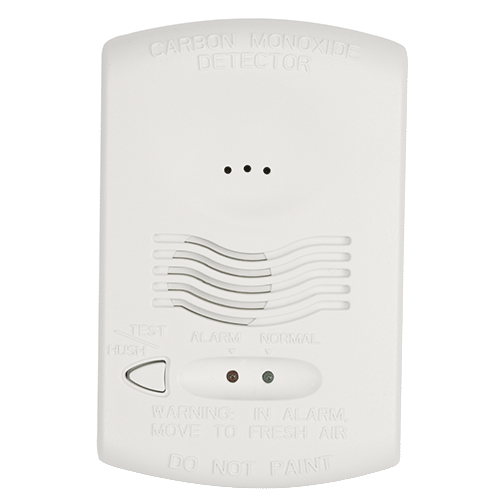Many call carbon monoxide the “silent killer,” and for good reason. Carbon monoxide, or “CO,” often goes unnoticed because it escapes detection from any of the senses. Unlike smoke, carbon monoxide has no visible appearance or smell. Also unlike smoke, it creates no taste when breathed in and would not irritate your skin. A recent Centers for Disease Control and Prevention FAQ on the subject reports that over 400 Americans die annually of CO poisoning. In this post, we share some of our most valuable carbon monoxide safety tips for you and your family.
We will start this post with an overview of carbon monoxide. While most people have heard of carbon monoxide, many would struggle to define it or shield themselves against it. From there, we will discuss the warning signs of exposure to CO. People obviously have a difficult time recognizing the presence of carbon monoxide. Therefore, knowing the potential symptoms to exposure can create additional carbon monoxide safety. Finally, we’ll discuss installing CO detection in your home. We’ll share minimum carbon monoxide alarm coverage requirements, as well as ideas for additional CO alarms. Let’s begin with an overview of how carbon monoxide builds up, and what you can do to stop it.

Fireplaces are one of many potential CO-producing locations found in homes that, without proper ventilation, can lead to unsafe conditions.
What Creates Carbon Monoxide, and What Can I Do About it?
As a quick introduction, carbon monoxide is a gas produced by burning fuel. Vehicles, lanterns, gas ranges, fireplaces, and appliances make up just a few potential sources of CO. While building up indoors or in an enclosed area, carbon monoxide proves especially dangerous. When victims of CO poisoning breathe in too much of the gas, the CO replaces the oxygen in their red blood cells. Tissue damage and even death can follow once this occurs. While many appliances or circumstances will create CO, you can take steps to limit the amount that you breathe in.
One step that you can take involves ensuring proper ventilation of fuel-burning appliances. These appliances should have ventilation that deposits the carbon monoxide they create outside. If part of this ventilation system breaks or malfunctions, CO can stream into your home instead. Regularly scheduled maintenance for your home’s fuel-burning devices can help prevent this. We also recommend not warming cars up inside a garage. Occasionally, CO from the garage can leak into your home. Additionally, walking into your garage with an already-running car inside could expose you to CO buildup. Now we have a brief overview of carbon monoxide and how it accumulates. Let’s look at the symptoms of carbon monoxide poisoning next.
Know the Symptoms of CO Poisoning, and React Quickly
Realizing when you may have experienced too much exposure to carbon monoxide can help you escape a dangerous situation. Overexposure to CO can lead to unexpected dizziness, vomiting, confusion or weakness. Unfortunately, many mistake these symptoms for the flu instead of CO poisoning. If you experience these symptoms, get some fresh air outside as quickly as possible. Failure to do so can lead to passing out and, eventually, death. Acting quickly when these symptoms arise can make a huge difference. At this point, you have an idea of why CO can prove so dangerous and what happens to people experiencing poisoning from this deadly gas. Now, let’s shift our focus to creating an effective system for detecting carbon monoxide.
Install and Maintain Proper CO Detection
Knowing how CO poisoning affects victims can help them react as quickly as possible. Additionally, installing devices to detect CO before you experience these symptoms also adds a great amount of carbon monoxide safety. Carbon monoxide alarms create an audible notification when detecting this poisonous gas in the air. The alert can help you get out of the house before experiencing the crippling symptoms listed above. You should install CO alarms at all required location, as well as additional locations as needed. We’ll get into those specific requirements in the next section. Additionally, you should change your carbon monoxide alarms every 5-7 years. The back of the alarm itself often has a sticker with a “change-by” date on it.

A CO alarm testing kit, such as this model by Qwik CO, can be used to make sure your alarms will catch dangerous CO levels in your home.
We also recommend periodic testing of your carbon monoxide alarms. Pressing the “test” button will let you know that the alarm has enough power to sound an alert. However, this does not verify the alarm’s ability to actually detect CO. Testing the alarm using carbon monoxide can ensure that it will actually function when needed.
If you have CO alarms with detection level displays on them, you can expose the alarms to low levels of CO to make sure the display reflects this exposure. Lighting incense in front of the alarm should change the reading to reflect a low level of carbon monoxide. Using a test kit such as the one pictured can accomplish the same goal whether your CO alarms have digital displays on them or not. At this point, we’ve gone over the basics of CO alarm maintenance and testing. Now, let’s get into the installation location requirements, as well as some additional areas in which you may wish to add CO detection.
Carbon Monoxide Alarm Location Requirements and Suggestions
Our post on Residential Smoke Alarm Requirements in Massachusetts covers the basics (and then some) regarding the required locations of smoke and CO alarms in your home. Beginning in 1975, houses newly built, renovated, or sold have had requirements for smoke alarm installation locations. However, carbon monoxide detection in homes only became mandatory beginning in 2006. Furthermore, houses generally only receive an inspection when the owner either performs a renovation or sells the home. This means that many homes do not have even minimal CO detection installed. Let’s go over locations that require CO detection in order for your home to pass an inspection. From there, we’ll make suggestions for additional coverage, which we always recommend considering.
Minimum Requirements
Minimally, you must install one carbon monoxide alarm on each floor of your home, including the basement. Unfortunately, sleeping individuals may fall prey to carbon monoxide poisoning without experiencing any symptoms. That makes effective CO detection around sleeping areas all the more important. For that reason, homeowners must also install CO alarms within ten feet of all sleeping areas. Often, builders design homes so that a single CO detector on a floor meets both of these requirements. As long as all of a floor’s sleeping areas are within 10 feet of a given central location, that floor only requires one alarm.
Additionally, houses built in or after the year 2008 require hardwired, interconnected CO alarms. This means that when one alarm senses a dangerous level of CO buildup, all the alarms will sound. This creates additional carbon monoxide safety, as CO building up in your basement, for example, will create an alarm that you can hear anywhere in the house before the deadly gas creeps up closer to the upper floors. This covers your minimum legal level of CO alarm coverage. Now let’s look at some ways you can add detection above and beyond what’s required.
Additional Installation and Service Suggestions
As we discussed earlier, carbon monoxide buildup occurs most near very specific areas of the home. Fireplaces and certain appliances create CO, and you will want to know if they create dangerous levels of this gas. We recommend installing carbon monoxide alarms 5-20 feet away from fireplaces, furnaces, water heaters, and other appliances that may warrant this treatment as well. Garages attached to your home can also create CO in your house if you have air leaks near the garage, or if you need to better seal your interior garage door. Installing an alarm near the wall between your garage and the rest of your house can help detect these conditions.

Carbon monoxide detectors, such as this model by System Sensor, can create a fire station response after detecting dangerous levels of CO in your home.
Furthermore, installing a system of monitored CO detectors can also create extra carbon monoxide safety in your household. The carbon monoxide alarms we’ve discussed thus far can create a local siren response to a buildup of CO. CO detectors as part of a monitored alarm system will also create a fire station response to an emergency. Part of the “silent killer” moniker that carbon monoxide has earned lies in its ability to poison and even kill people in their sleep without them ever feeling any symptoms or other warning signs. Monitored CO detection can save lives by creating a quick response and getting someone to your house who can help.
Creating a Plan to Stay Safe from Carbon Monoxide
We hope that this post has given you some ideas to add carbon monoxide safety to your own property. If you have read this post and have questions about it, we encourage you to contact us. If desired, we provide free site surveys to evaluate your risks for carbon monoxide buildup. Perhaps you already have a good idea of what you need for monitored CO detection equipment. In that case, we can help you design and install your detection system. Or perhaps you have no idea what to install or where to install it, and need help building a system from scratch. Either way, we’re here to help you. We can address any concerns you have and make suggestions of our own as well. Together, we can create a plan that keeps you as safe from carbon monoxide as possible.
Feature Photo Credit: Smartsign on Flickr. Used under the CC BY 2.0 license.
